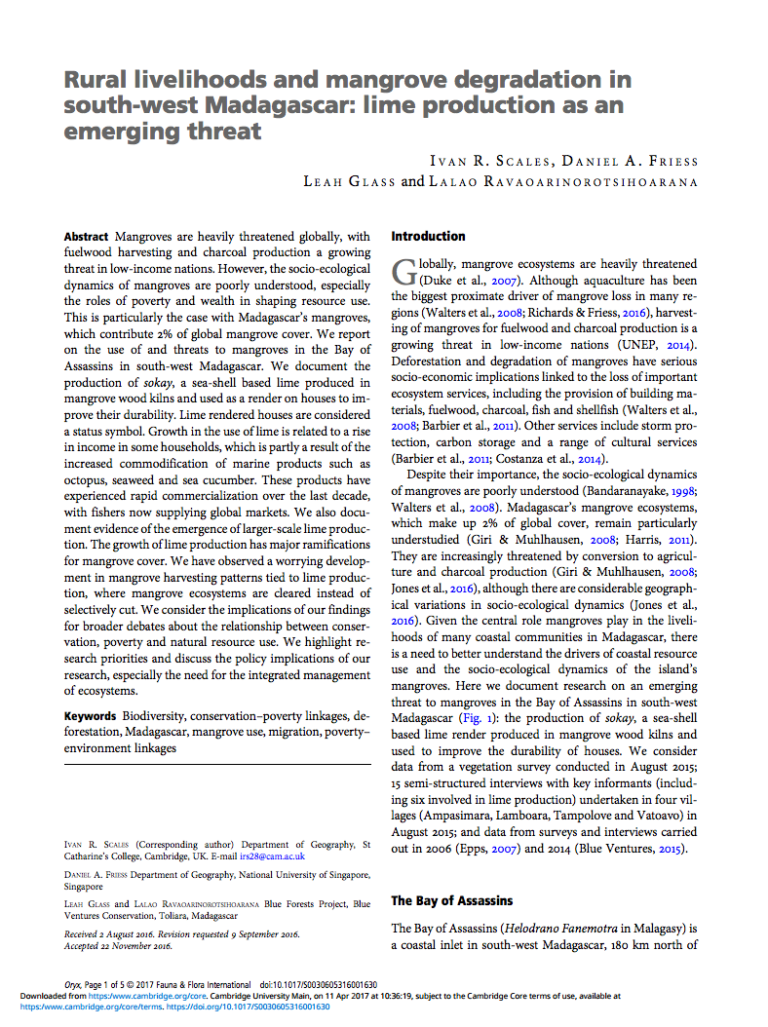Keywords:
Biodiversity, conservation–poverty linkages, deforestation, Madagascar, mangrove use, migration, poverty– environment linkages
Abstract:
Mangroves are heavily threatened globally, with fuelwood harvesting and charcoal production a growing threat in low-income nations. However, the socio-ecological dynamics of mangroves are poorly understood, especially the roles of poverty and wealth in shaping resource use. This is particularly the case with Madagascar’s mangroves, which contribute 2% of global mangrove cover. We report on the use of and threats to mangroves in the Bay of Assassins in south-west Madagascar. We document the production of sokay, a sea-shell based lime produced in mangrove wood kilns and used as a render on houses to improve their durability. Lime rendered houses are considered a status symbol. Growth in the use of lime is related to a rise in income in some households, which is partly a result of the increased commodification of marine products such as octopus, seaweed and sea cucumber. These products have experienced rapid commercialization over the last decade, with fishers now supplying global markets. We also document evidence of the emergence of larger-scale lime production. The growth of lime production has major ramifications for mangrove cover. We have observed a worrying development in mangrove harvesting patterns tied to lime production, where mangrove ecosystems are cleared instead of selectively cut. We consider the implications of our findings for broader debates about the relationship between conservation, poverty and natural resource use. We highlight research priorities and discuss the policy implications of our research, especially the need for the integrated management of ecosystems.


